The Frank and Annie Ruth House
Introduction
Text-to-speech Audio
It may not appear so today, but this house began its life as a barn. When Frank and Annie Ruth came to Frisco, they converted the barn into a home on Main Street. Annie Laura Scott was born in Canada in the 1880s and married Colorado local Frank Ruth in 1906. They were ranchers and dairy farmers and briefly managed a summer resort at Uneva Lake. Frank died in 1943, followed by Annie in 1957. They are both buried in the Dillon Cemetery.
Images
The Frank & Annie Ruth House sat on Main Street until the 1980s, when it was moved to the Frisco Historic Park & Museum.
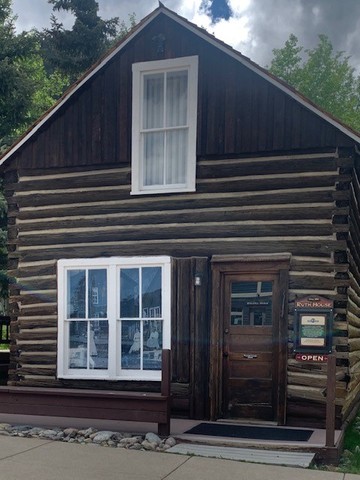
The two story Frank & Annie Ruth House in its original location in Frisco, Colorado. In this picture you can see the far corner of a single-story wood addition. These additions were common for kitchens or bedrooms as families grew or to make room for modern amenities. In the background sits Buffalo Mountain.
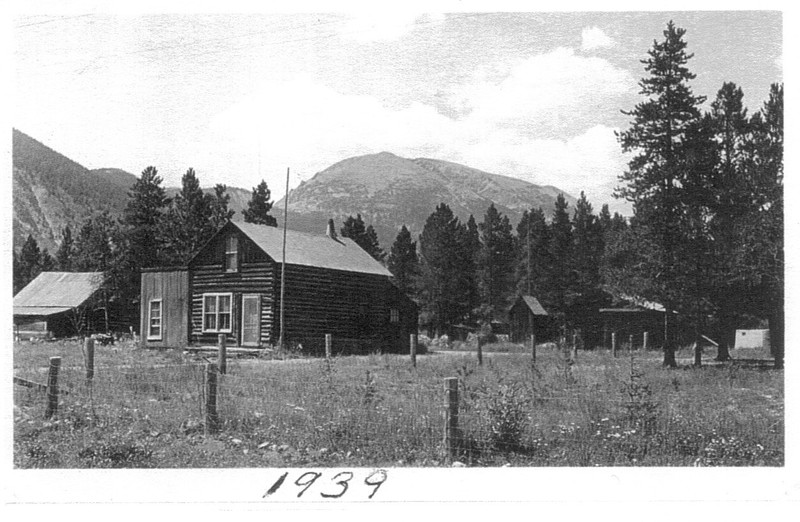
In the early years of the Frisco Historic Park, local crafters and artisans set up shop in the historic buildings. The sign out front reads "Wildflower Natural Foods- The Loft Pottery".
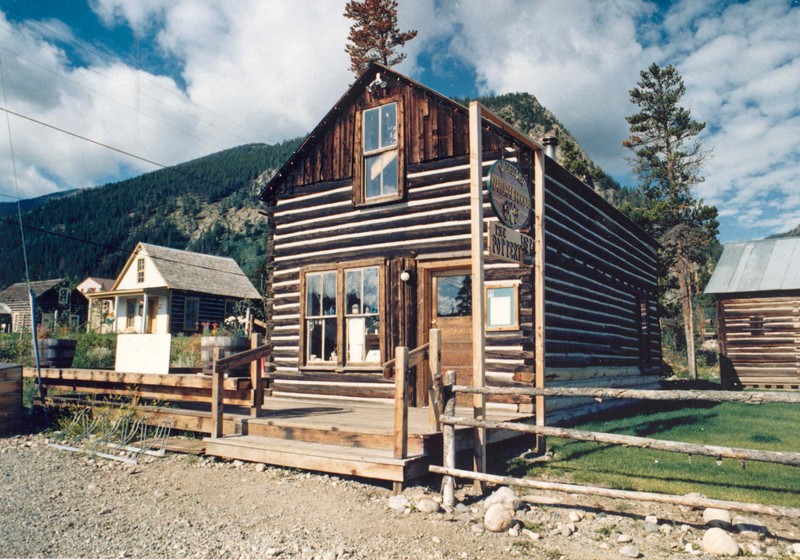
Women's fashion magazines carried the latest trends alongside sewing tips and cut out paper dolls- pictured here.
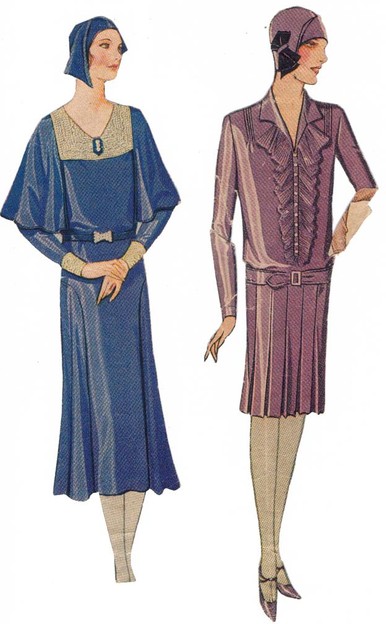
A quilt crafted for the 1976 Colorado Centennial celebration raffle. It has 35 quilted blocks depicting Summit County and Colorado motifs. Most blocks have the signature of the sewer.

This sampler was found in a sewing basket belonging to Esther Sybilla Hefty, 1883-1963. A sampler was used by young girls or women to practice stitching techniques. Patterns were stenciled onto the fabric as a guide.
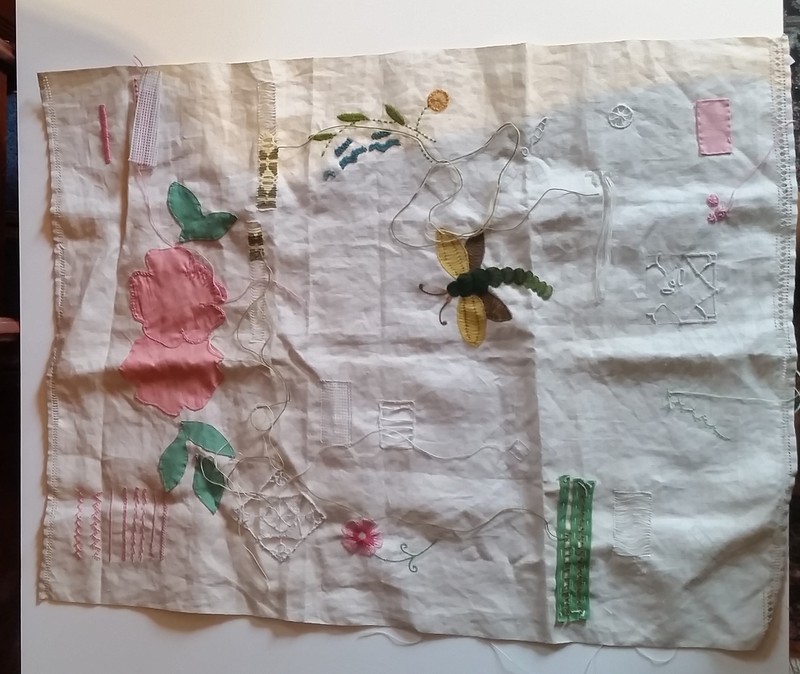
A 1930s example of a crazy quilt. Notice the elaborate, visible stitching and array of colors.
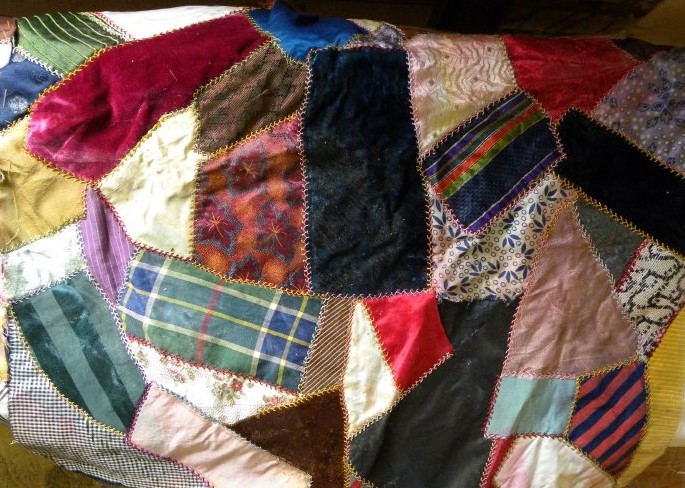
A group of people at the Frisco Depot located at the base of Mount Royal. Women frequently traveled in nicer clothing, complete with hat and jackets.
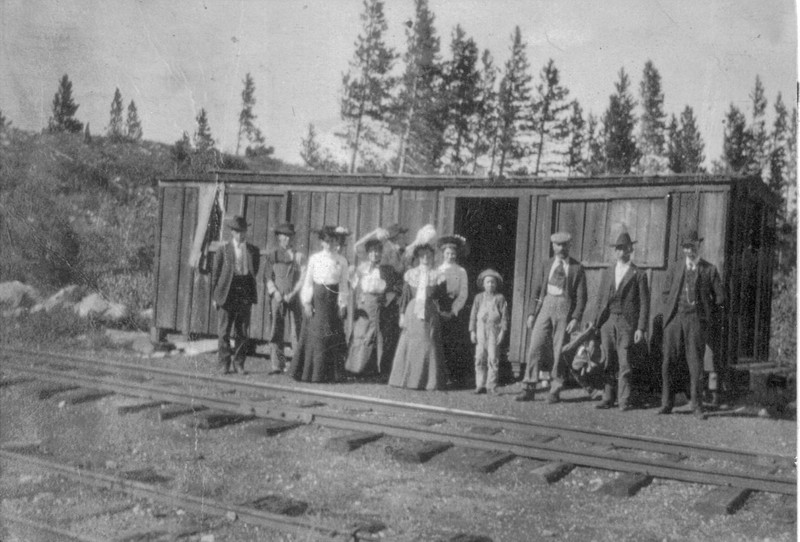
A Black and white photo, circa 1915, featuring a group of women with a young child and a dog. One woman sits apart from the rest holding what looks like a teddy bear. Notice their long skirts and sleeves.

A picture-turned-postcard, circa 1912, addressed to Mr. Carl Hedenskog, in La Junta, Colorado. The women are self-identified as Mrs. Meffly and Florence [Hedenskog]. Notice the large hat and the lace-up, close-toed shoes.
![A picture-turned-postcard, circa 1912, addressed to Mr. Carl Hedenskog, in La Junta, Colorado. The women are self-identified as Mrs. Meffly and Florence [Hedenskog]. Notice the large hat and the lace-up, close-toed shoes.](https://storage.googleapis.com/clio-images/medium_9451_2006.168.002B.jpg)
Backstory and Context
Text-to-speech Audio
In the late 1800s and early 1900s, mining settlements and restaurants employed women as cooks. In larger mining camps, women would run boarding houses. Women also frequently owned property and operated businesses. Jane Thomas owned and operated the Thomas Hotel on Main Street and utilized the Homestead Act to create a large dairy ranch just south of town. Kittie Ecklund operated what is now the Frisco Lodge on Main Street while her husband, Conrad, worked the mines. Other women, like Hetta Learned, inherited their husbands' businesses and land after their deaths.
Like many Frisco women, Annie Ruth was a mother, wife, and civic leader. Two decades earlier, Florence Huter served as the first female mayor of Frisco in 1916 alongside an entirely female board of trustees. These women were steadfast in their love for this mountain community and actively pursued roles to advocate initiatives near and dear to them. Popular issues included temperance, national suffrage, gender roles, and local welfare. All benefited from the 1893 Colorado referendum on women's suffrage, giving white women the right to vote. Many Frisco women, especially those in government, worked as members of the Summit County chapter of the Red Cross. They raised money, created clothing, gathered supplies, and generated support for the war efforts of World War I.
In Frisco, women rode horses, hiked, fished, danced, cooked, cleaned, and socialized in the clothing they often made themselves. During winter, women wore furs and thick shoes. During summer, lighter fabrics and broad-brim hats were the preferred attire. Sturdy shoes were worn year-round as unpaved streets and outdoor pursuits required more than fashionable slippers.
Sources
Cox Crews, Patricia. Fueled by Silk: Victorian Crazy Quilt Mania. Textile Society of America Symposium Proceedings. Published January 1st 2020.
https://digitalcommons.unl.edu/cgi/viewcontent.cgi?referer=https://www.google.com/&httpsredir=1&article=1014&context=tsaconf
Blakemore, Erin. The Disease That Helped Put Colorado on the Map, History.com. April 24th 2020. Accessed July 12th 2020. https://www.history.com/news/the-disease-that-helped-put-colorado-on-the-map.
Brick, Cindy Joan. Crazy Quilt, Britannica. Accessed July 12th 2020. https://www.britannica.com/topic/crazy-quilt-soft-furnishing.
Written for Zocalo Public Square. Women and the Myth of the American West. Time . January 11th 2015. https://time.com/3662361/women-american-west/.
Kennedy, Allison. Women of the West, National Park Service. June 20th 2020. Accessed July 12th 2020. https://www.nps.gov/articles/women-of-the-west.htm.
Breneman, Judy Anne. Crazy Quilt History: A Victorian Craze, Women Folk. January 1st 2001. Accessed July 12th 2020. http://www.womenfolk.com/quilting_history/crazy.htm.
Colorado Women's Hall of Fame. Accessed July 12th 2020. https://www.cogreatwomen.org/inductees/women-in-the-hall/.
Pritchard, Sandra F. Roadside Summit: The Human Landscape. Colorado. Summit Historical Society, 1992.
Gilliland, Mary Ellen. Summit: A Gold Rush History of Summit County, Colorado. Edition Fifth . Silverthorne, CO. Alpenrose Press, 2006.
Mather, Sandra F. Images of America: Summit County. Charleston, South Carolina. Arcadia Publishing, 2008.
Mather, Sandra F. Images of America: Frisco and the Ten Mile Canyon. Charleston, South Carolina. Arcadia Publishing, 2011.
Fulmer, Marion. Pedersen, Suzanne. Women As Tall As Our Mountains. Edition Fifth. Colorado. P.E.O, Chapter FU, 1980.
Frisco Historic Park & Museum
Frisco Historic Park & Museum
Frisco Historic Park & Museum
Frisco Historic Park & Museum
Frisco Historic Park & Museum
Frisco Historic Park & Museum
Frisco Historic Park & Museum
Frisco Historic Park & Museum
Frisco Historic Park & Museum
Frisco Historic Park & Museum
